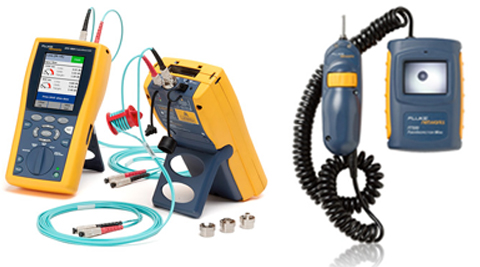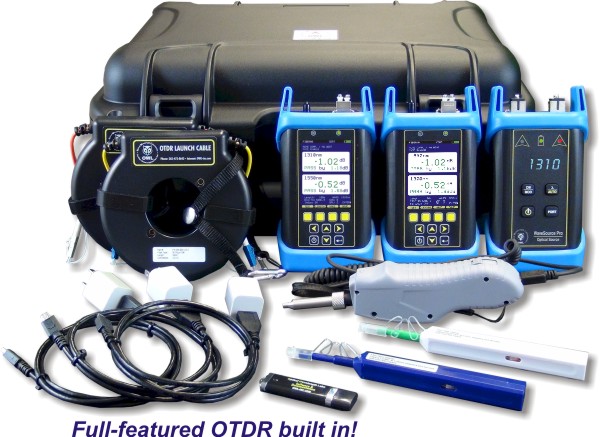Top Indicators that you need to upgrade your optical measurement system
Top Indicators that you need to upgrade your optical measurement system
Blog Article
A Comprehensive Guide to Optical Measurement System for Fiber Evaluation
When it pertains to fiber analysis, recognizing optical measurement systems is crucial for examining efficiency and making sure top quality. You'll check out essential methods like interferometry and spectroscopy, which help you measure essential specifications. There's even more to it than just these methods; understanding attenuation measurement strategies can greatly affect your network's efficiency. As you navigate with this guide, you'll uncover insights that could change your method to optical fiber.
Comprehending Optical Measurement Systems
When you check out optical dimension systems, you'll uncover they're important for assessing fibers with precision. These systems make use of light to assess numerous features of fibers, consisting of diameter, refractive index, and uniformity. By employing strategies like interferometry and spectroscopy, you can acquire important insights right into the fiber's properties.You'll discover that these systems are created to decrease errors and improve accuracy, guaranteeing trustworthy information for your evaluation. Various setups, such as single-mode and multi-mode systems, accommodate particular fiber types, permitting you to choose the very best fit for your needs.Moreover, the combination of advanced software application tools helps you interpret the information effectively, making it simpler to recognize any type of incongruities or flaws. As you examine much deeper into these dimension systems, you'll value exactly how they simplify the analytical procedure and improve the overall quality of fiber production and screening.
Secret Parameters for Fiber Analysis
Secret specifications for fiber analysis play a necessary function in establishing the high quality and efficiency of fiber optics. When you evaluate a fiber, you'll intend to focus on characteristics such as depletion, transmission capacity, and modal dispersion. Depletion determines the loss of signal strength as light trips via the fiber. A lower depletion value suggests much better quality and longer transmission distances - optical measurement system.Bandwidth describes the data-carrying capacity of the fiber and is essential for high-speed communication. You'll need to evaluate the bandwidth to guarantee it fulfills your application demands. Modal diffusion, which arises from the different rates at which light trips with different settings in multimode fibers, affects signal quality
Strategies for Attenuation Measurement

Bandwidth and Its Influence On Performance
Comprehending data transfer is important for maximizing fiber efficiency, as it directly affects the quantity of information that can be transferred over a network. Greater data transfer means you can send even more information all at once, enabling faster communication and better total performance. When you're dealing with optical fibers, it's important to consider exactly how transmission capacity connects with fiber characteristics, such as core size and material properties.If the bandwidth is restricted, you might experience information loss or slower speeds, impacting your applications. Additionally, different kinds of fibers you could try here can support varying bandwidth levels, so it is very important to pick the appropriate fiber for your details needs.You must likewise remember that ecological aspects, like temperature level and outside disturbance, can impact bandwidth. By comprehending these facets, you can make enlightened decisions to boost your fiber optic systems, guaranteeing trusted and reliable data transmission.
Refractive Index Measurement Techniques

Overall Interior Reflection
Total internal reflection (TIR) offers as an essential concept for measuring the refractive index of fibers. When light travels from a denser medium to a less dense one, it can just be totally reflected if the angle of occurrence exceeds a details limit, known as the crucial angle. This sensation allows you to establish the refractive index by analyzing the angles at which light mirrors or refracts. By utilizing a configuration that routes light into a fiber and measures the resulting angles, you can determine the refractive index precisely. Understanding TIR not just boosts your fiber analysis but likewise enhances the design and efficiency of optical systems. Leveraging TIR can lead to extra effective fiber-based applications.
Interferometric Methods
Structure on the principles of total internal representation, interferometric techniques supply an effective means for determining the refractive index of fibers with high precision. These approaches manipulate the disturbance patterns created when light beam of lights split and recombine after taking a trip various paths. You can utilize configurations like the Michelson or Mach-Zehnder interferometer to assess phase shifts brought on by adjustments in refractive index. By meticulously calibrating your system and assessing the resulting edges, you can identify the refractive index with impressive precision. It's important to maintain secure ecological conditions to reduce errors. With these strategies, you'll enhance your understanding of fiber buildings, bring about much better efficiency in various applications, from telecoms to sensor modern technology.
Modal Dispersion and Its Relevance
Modal diffusion describes the dispersing of light pulses as they travel through a fiber, which can influence the overall efficiency of the system. you can try these out You'll see that this phenomenon can lead to indicate distortion, affecting information transmission prices and high quality. Recognizing its importance is necessary for optimizing fiber optic designs.
Meaning of Modal Diffusion
In optical fiber communications, modal diffusion plays a substantial role in figuring out signal quality and transmission rate. It happens when various light settings travel at varying speeds with the fiber. Given that each setting has distinct paths and qualities, they can get to the obtaining end at various times. This time around distinction can lead to signal dispersing and distortion, which can weaken the overall performance of the communication system. You might come across modal dispersion mostly in multimode fibers, where the several paths of light worsen the problem. Understanding modal dispersion is crucial for enhancing fiber layouts and making certain that your communication systems run effectively, preserving the integrity of the transmitted signals over longer ranges.
Effects on Fiber Performance
Understanding modal dispersion aids highlight its results on fiber efficiency. This phenomenon takes place when various modes of light travel at differing speeds within the fiber, resulting in signal spreading with time. As you examine fiber optics, you'll discover that enhanced modal diffusion can significantly break down signal top quality, leading to lowered bandwidth and longer transmission distances. In functional terms, this indicates your information can show up altered or delayed, impacting overall interaction performance. To alleviate these effects, you could think about making use of single-mode fibers, which decrease modal dispersion. By picking the right fiber type and comprehending just how modal diffusion influences efficiency, you can boost transmission top quality and assurance trustworthy information transfer in your optical measurement systems.
Tools and Technologies for Optical Measurements
When it concerns optical measurements, a number of innovative tools and modern technologies go to your disposal to enhance fiber analysis. You'll locate fiber optic testers, which assess signal top quality and performance, important for preserving ideal network efficiency. Optical time-domain reflectometers (OTDRs) are vital for finding faults and gauging loss over ranges, giving in-depth understandings right into fiber stability. Furthermore, spectrometers can examine light spectra, assisting you identify product homes and composition.Don' t overlook the significance of imaging systems, like digital microscopic lens, that enable you to aesthetically inspect fiber surfaces for issues. Also, take into consideration using polarization analyzers to determine stress and anxiety and pressure in fibers, which is vital for comprehending their behavior under various conditions. By leveraging these tools and modern technologies, you can significantly enhance your fiber analysis procedures, making certain integrity and high performance in your optical networks.
Frequently Asked Concerns
What Are the Expenses Linked With Optical Measurement Systems?
The expenses connected with optical dimension systems can differ considerably. You'll require to assess equipment prices, upkeep charges, software application licenses, and potential training expenditures. Budgeting very carefully will aid you avoid unforeseen financial obstacles down the line.

How Typically Should Fiber Analysis Be Done?
You need to perform fiber evaluation on a regular basis, usually every 6 months or after significant adjustments in the atmosphere (optical fibre diameter analyzer). This guarantees optimal performance and aids determine potential problems prior to they affect your system's efficiency and dependability
Can Optical Measurement Equipments Be Adjusted in your home?
Yes, you can calibrate optical measurement systems in your home, however it additional reading calls for accuracy. Make certain you follow the producer's standards, use proper calibration standards, and ascertain your results to assure precision in your measurements.
What Industries Commonly Make Use Of Optical Measurement Solutions?
You'll discover optical measurement systems commonly used in markets like telecommunications, manufacturing, medical care, and research. They're vital for quality control, fiber evaluation, and guaranteeing accurate measurements in numerous applications, enhancing performance and precision across markets.
Are There Any Type Of Security Issues With Optical Measurement Solutions?
Yes, there are security worries with optical dimension systems. You ought to constantly wear protective eyewear to protect your eyes from extreme light sources and warranty proper training to manage equipment safely and avoid mishaps.
Report this page